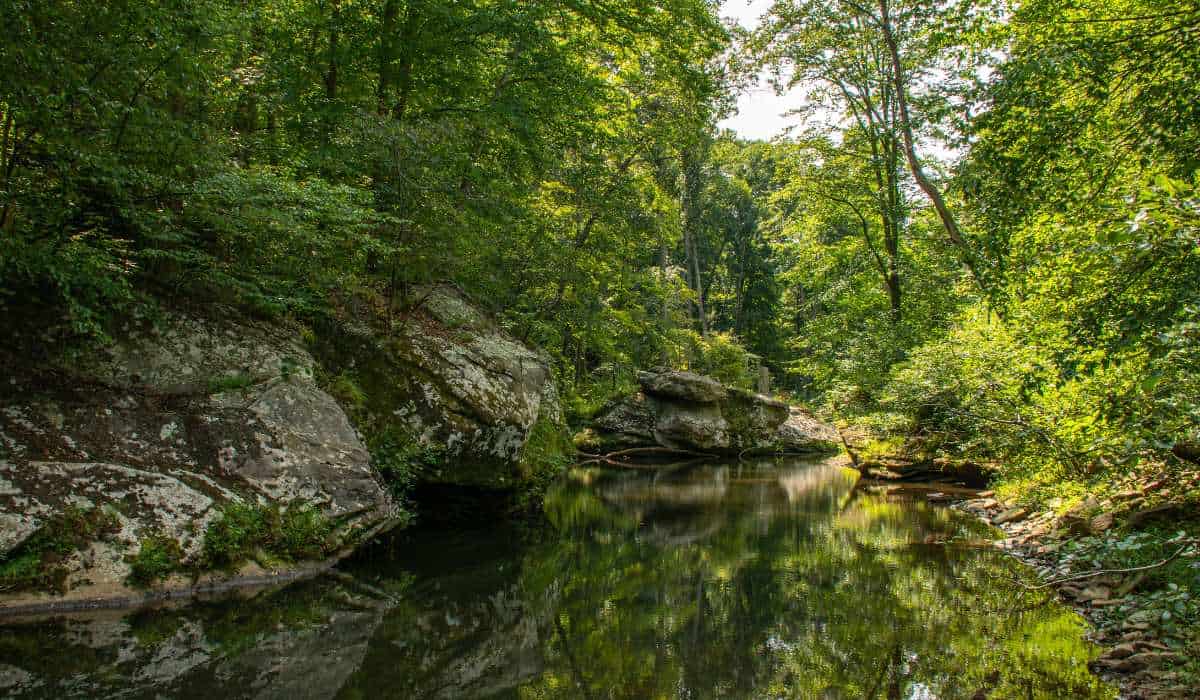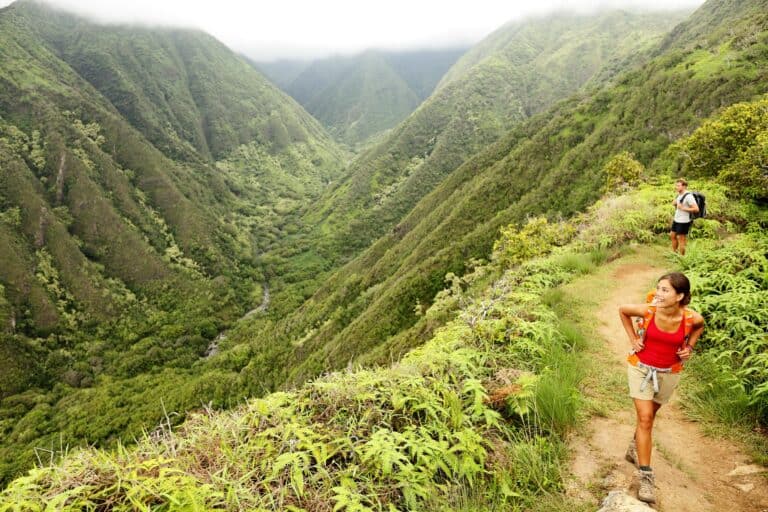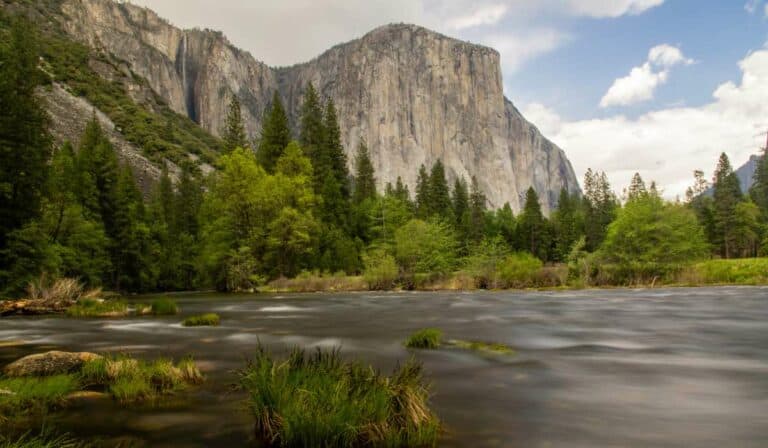Best Hikes in Shawnee National Forest
Exploring the breathtaking trails of Shawnee National Forest is an unforgettable experience. This Southern Illinois gem offers a diverse range of hiking trails, each with its unique attractions and challenges.
In this comprehensive guide, we will explore what to expect when hiking through the forest’s enchanting landscapes. We’ll provide valuable tips for planning your adventure, ensuring a memorable and safe journey into the wilderness.
You’ll discover beginner-friendly trails that cater to those new to hiking or seeking a leisurely stroll amidst captivating scenery. For seasoned hikers looking for more thrilling experiences, we’ve got you covered as well.
Along these remarkable trails are must-see attractions that showcase the natural beauty and geological wonders found within Shawnee National Forest. For those who want to take in the sights of Shawnee National Forest, we can provide accommodation suggestions that will let you fully experience this outdoor paradise.
Finally, explore the ways to help safeguard and maintain Shawnee National Forest for posterity while taking in some of its most incredible treks.
Table of Contents
Discover the Best Hikes in Shawnee National Forest

Located in Southern Illinois, Shawnee National Forest is a treasure trove of natural beauty and outdoor adventure. With its sprawling 280,000 acres of land, Shawnee National Forest offers a variety of trails for hikers of all levels and interests. Whether you’re seeking breathtaking views or serene woodland walks, there’s something for everyone at Shawnee National Forest.
To help you plan your next hiking adventure, we’ve compiled a list of some of the best hikes in Shawnee National Forest:
- Garden of the Gods Recreation Area: This popular destination features unique rock formations and stunning panoramic views. The Observation Trail is an easy 0.25-mile loop that takes hikers through magnificent sandstone cliffs and overlooks.
- Pomona Natural Bridge: A short 0.3-mile trail leads visitors to this impressive natural bridge made from sandstone bedrock. Amidst verdant foliage, it’s a great place for shutterbugs.
- Ferne Clyffe State Park: Home to numerous waterfalls and scenic vistas, Ferne Clyffe offers several trails ranging from easy strolls to more challenging treks like the Big Rocky Hollow Trail (2 miles) which passes by Bork Falls – one of Southern Illinois’ tallest waterfalls.
- Lusk Creek Canyon Wilderness Area: For those looking for solitude amidst nature’s splendor, Lusk Creek Canyon provides pristine wilderness with rugged terrain ideal for experienced hikers who want a challenge on their journey through its various trails such as Indian Kitchen (4 miles).
- Little Grand Canyon: This 3.6-mile loop trail offers a moderately challenging hike through the forest, featuring steep climbs and descents as well as stunning views of the Mississippi River floodplain.
No matter which trails you choose to explore in Shawnee National Forest, be prepared for an unforgettable adventure that showcases the best of Southern Illinois’ natural beauty. As you embark on your journey, remember to follow Leave No Trace principles and practice responsible hiking to ensure these beautiful landscapes remain preserved for future generations.
Shawnee National Forest is a fantastic spot for hikers of all skill levels, providing amazing sights and lots of pathways to traverse. With so many options available, it can be hard to decide which hikes are the best. For those seeking to embark on a hiking adventure in Shawnee National Forest, this article will provide guidance on selecting the best trail for your needs.
The Key Takeaway:
Explore the wondrous Shawnee National Forest in Southern Illinois, boasting an array of pathways for all levels and inclinations. From easy strolls to more challenging treks, these trails showcase the natural beauty of Southern Illinois with stunning panoramic views, unique rock formations, waterfalls, and rugged terrain ideal for experienced hikers.
Click here to read about Best Hiking Boots for Overpronation
What to Expect on a Hike in Shawnee National Forest
The Shawnee National Forest offers an incredible variety of hiking trails that cater to all levels of experience, there’s something for everyone. In this section, we’ll discuss what you can expect while exploring the beautiful southern Illinois landscape.
Terrain and Trail Types
In the Shawnee National Forest, you’ll discover a variety of topographies that will give your hikes an exciting and distinct experience. Some common features include:
- Rugged cliffs and rock formations
- Dense forests with towering trees
- Gentle rolling hills and open meadows
- Tranquil streams and waterfalls
- Sweeping views from scenic overlooks
The forest is home to various trail types, ranging from well-maintained paths suitable for beginners to more difficult trails requiring advanced navigation skills. Many hikes are looped or interconnected so that hikers can customize their adventure based on skill level or desired distance.
Wildlife Encounters
While hiking in Shawnee National Forest, keep your eyes peeled for the abundant wildlife that calls this area home. You may spot white-tailed deer grazing in meadows or hear songbirds chirping high above as they flit between branches. Be sure also to watch out for snakes such as copperheads – always give them plenty of space if encountered.
Hiking Seasons & Weather Conditions
The best time for hiking in Southern Illinois depends on personal preferences and weather conditions. Spring and fall are popular seasons for their mild temperatures, vibrant foliage, and wildflower blooms. Summer can be hot and humid but offers longer daylight hours for extended hikes. Winter brings colder temperatures with occasional snowfall, making it an excellent time to explore the forest’s serene beauty.
Always check local weather forecasts before embarking on your hike in Shawnee National Forest. Be prepared for sudden changes in temperature or precipitation by dressing in layers and packing rain gear.
Park Facilities & Amenities
Shawnee National Forest provides a variety of facilities to enhance your hiking experience, including:
- Picnic areas with tables and grills
- Rustic campgrounds for overnight stays
- Vault toilets at select trailheads
- Educational exhibits about the area’s natural history
To make the most of your visit to this stunning southern Illinois destination, familiarize yourself with what you can expect while exploring its diverse trails – from terrain types to wildlife encounters. Happy hiking.
From the stunning views of bluffs and canyons to the abundance of wildlife, Shawnee National Forest is a nature-lovers paradise. Prepare thoroughly and you’ll be all set for an unforgettable journey through the gorgeous Shawnee National Forest. Now let’s look at some tips on how to plan your hike in Shawnee National Forest.
The Key Takeaway:
Shawnee National Forest provides a range of trails for hikers, from relaxed ambles to more demanding hikes. Hikers can expect diverse terrains such as cliffs, forests, hills, meadows, and streams with abundant wildlife encounters. The park provides facilities like picnic areas, campgrounds, and educational exhibits to enhance the overall hiking experience.
Conditions and Difficulty Levels

Planning your hike in the beautiful Shawnee National Forest is essential to ensure a safe and enjoyable experience. To ensure a successful trip, it is important to research trail conditions and difficulty levels prior to embarking on your hike in Shawnee National Forest.
A. Research Trail Conditions and Difficulty Levels
Prioritize researching the hiking trails within Shawnee National Forest before embarking on your adventure. The USDA Forest Service website offers detailed information about various trails, their difficulty levels, distances, elevation gains, and any potential hazards or closures due to weather or maintenance.
B. Check Weather Forecasts Before Heading Out
Southern Illinois’ unpredictable weather can significantly impact your hiking plans; therefore, it’s crucial always to check local forecasts before hitting the trails. Websites like The Weather Channel provide accurate updates so that you can plan accordingly.
C. Pack Essential Gear for Your Hike
- Hiking shoes: Invest in comfortable footwear with good traction suitable for various terrains found throughout Shawnee National Forest’s hiking trails.
- Clothing layers: Dress in moisture-wicking layers to keep you warm during cooler mornings while allowing easy removal as temperatures rise throughout the day.
- Rain gear: Don’t forget waterproof jackets or ponchos since sudden rain showers are common occurrences during certain seasons.
- Navigational tools: Bring a map, compass, or GPS device to help you stay on track and avoid getting lost.
- First aid kit: A well-stocked first aid kit is essential for addressing minor injuries while out on the trail.
- Water and snacks: Stay hydrated by carrying enough water for your entire hike. Pack high-energy snacks like granola bars or trail mix to keep hunger at bay.
D. Know Your Limits and Hike Responsibly
Hiking in Shawnee National Forest can be challenging; therefore, it’s crucial to know your limits and choose trails that match your fitness level. Before setting off, always inform someone of your hiking plans so that they can be contacted in the event of an emergency. Remember to follow the Leave No Trace principles, ensuring that this beautiful area remains pristine for future generations.
E. Be Prepared for Wildlife Encounters
The forest is home to various wildlife species such as deer, wild turkeys, snakes, and even black bears. Familiarize yourself with how best to react during encounters with these animals by visiting websites like the National Park Service’s guide on wildlife encounters.
Taking time beforehand to plan will ensure a safe and enjoyable experience exploring the diverse terrain of Shawnee National Forest.
Before embarking on a trek in Shawnee National Forest, it is wise to study the landscape, weather, and paths so that your journey can be secure and satisfying. With this knowledge under your belt, it’s time to explore some of the best trails for beginners in Shawnee National Forest.
The Key Takeaway:
Prior to a trek in Shawnee National Forest, it is vital to examine trail circumstances and observe meteorological predictions. Pack essential gear such as hiking shoes, rain gear, navigational tools, a first aid kit, water, and snacks. Know your limits and hike responsibly by choosing trails that match your fitness level and follow the Leave No Trace principles to preserve the natural beauty of the forest for future generations.
Click here to read about Best Easy Day Hikes Grand Teton National Park
The Best Trails for Beginners in Shawnee National Forest
For those who are just starting out or simply want to take a relaxed walk through the scenic Southern Illinois scenery, Shawnee National Forest offers several trails that are perfect for novices. These trails offer stunning views and unique features without requiring advanced hiking skills or strenuous climbs. Here are some of our top picks for beginner hikers:
- Garden of the Gods Observation Trail: This short 0.5-mile loop trail takes you through the breathtaking rock formations at Garden of the Gods Recreation Area. With its well-maintained path and minimal elevation gain, it’s perfect for beginners who want to experience one of Shawnee National Forest’s most iconic attractions.
- Pomona Natural Bridge Trail: Explore this geological wonder on a quick 0.3-mile hike that leads you beneath an impressive natural sandstone bridge measuring over 90 feet long. Learn more about this easy-to-navigate trail at the Pomona Natural Bridge page on the USFS website.
- Ferne Clyffe Waterfall Trail (Big Rocky Hollow): A picturesque waterfall awaits you at the end of this gentle one-mile round-trip hike located within Ferne Clyffe State Park, which is surrounded by Shawnee National Forest lands. Find out more information about visiting Ferne Clyffe State Park and its various trails on the Illinois Department of Natural Resources website.
- Cave-in-Rock State Park Trails: Hikers of all levels can take a tour through the past at Cave-in-Rock State Park with its trails from 0.1 to 0.5 miles in length, offering stunning views and picnic spots along the Ohio River. Visit the Cave-in-Rock State Park page on the IDNR website for more details.
For your safety, be sure to wear the right shoes, bring enough water, and stick to designated trails while exploring Shawnee National Forest. If you’re looking for more challenging hikes, check out our list of the best hikes in Shawnee National Forest.
Venturing through the Shawnee National Forest’s pathways is an incredible way to revel in nature and enjoy some time outside. Traversing these trails can be a fantastic experience, with plenty of wonderful sights to behold. Now let’s take a look at what must-see attractions you can find while trekking through this beautiful forest.
The Key Takeaway:
For those just starting out in the world of hiking or simply seeking a peaceful ramble, the Shawnee National Forest provides numerous trails ideal for novices. Some top picks include the Garden of the Gods Observation Trail, Pomona Natural Bridge Trail, Ferne Clyffe Waterfall Trail, and Cave-in-Rock State Park Trails. Remember to wear appropriate footwear and stay on marked paths for safety.
5 Must-See Attractions Along the Trails of Shawnee National Forest

The trails in Shawnee National Forest are filled with breathtaking attractions that showcase the beauty and diversity of Southern Illinois. Experience the wonders of Southern Illinois, from majestic waterfalls to imposing rock structures – it’s a must-see. Here are some must-see spots along your hiking journey:
- Garden of the Gods Recreation Area: This popular destination features unique sandstone rock formations, such as Camel Rock and Devil’s Smokestack. The Observation Trail offers stunning views of these geological wonders.
- Little Grand Canyon Trail: Experience a challenging hike through a miniature version of Arizona’s famous canyon. This trail takes you down into a steep gorge with scenic overlooks and picturesque waterfalls.
- Pomona Natural Bridge: A short hike leads you to this awe-inspiring natural bridge made from sandstone. It spans over 90 feet long and stands nearly 30 feet high.
- Bell Smith Springs: This area offers a variety of hiking trails, but the highlight is Devil’s Backbone, a natural stone arch that crosses over a crystal-clear creek.
- Ferne Clyffe State Park: Explore lush forests and rugged bluffs while hiking through this park. Don’t miss Bork’s Waterfall, an impressive cascade that flows after heavy rainfall.
These are just a few examples of the incredible attractions you’ll encounter on your hikes in Shawnee National Forest. Make sure to bring your camera along to capture these unforgettable sights.
From the Garden of the Gods to Rim Rock Trail, Shawnee National Forest offers some truly spectacular sights. Now let’s explore where you can stay during your visit.
Click here to read about Discover the Best Leash for Hiking with Dogs
Where to Stay During Your Visit to Shawnee National Forest
After a long day of exploring the beautiful Shawnee National Forest, you’ll need a comfortable place to rest and recharge for your next adventure. Southern Illinois offers various accommodations, from camping sites to lodges and cabins, ensuring that you find the perfect spot for your stay.
Camping Sites in Shawnee National Forest
If you’re looking for an authentic outdoor experience, there are several campgrounds within the national forest where you can pitch your tent or park your RV. Some popular options include:
- Garden of the Gods Recreation Area Campground: This campground provides a stunning vista of the nearby rock formations, and is close to some excellent trails for hiking.
- Pounds Hollow Campground: Located near a picturesque lake, this campground is perfect for those who enjoy fishing or swimming during their stay.
- Turkey Bayou Campground: A more secluded option with access to waterways suitable for canoeing and kayaking adventures.
Lodges and Cabins Near Shawnee National Forest Trails
For those looking for a more comfortable stay, there are numerous lodges and cabins near Shawnee National Forest Trails available to rent. These accommodations provide a comfortable stay with easy access to hiking trails and other outdoor activities. Some top choices include:
- Timber Ridge Outpost & Cabins: Offering unique treehouses and log cabins, this lodging option is perfect for those seeking a memorable experience.
- Shawnee Forest Cabins: Located near Garden of the Gods, these cozy cabins come equipped with modern amenities such as hot tubs and fireplaces.
- Rim Rocks Dogwood Cabins: Surrounded by beautiful woodlands, these rustic cabins offer easy access to Rim Rock Recreational Area’s popular hiking trails.
Whether you choose to camp under the stars or relax in a charming cabin after exploring Shawnee National Forest’s incredible hiking trails, Southern Illinois has something for everyone. Don’t forget to book your accommodation early during peak seasons.
Exploring Shawnee National Forest through camping is an excellent way to immerse yourself in the region’s stunning natural beauty. Now, let’s look into how you can help protect and preserve this amazing forest.
The Key Takeaway:
Southern Illinois offers various accommodations for visitors to Shawnee National Forest, from camping sites to lodges and cabins. Popular options include Garden of the Gods Recreation Area Campground, Pounds Hollow Campground, Turkey Bayou Campground, Timber Ridge Outpost & Cabins, Shawnee Forest Cabins and Rim Rocks Dogwood Cabins. Visitors are advised to book their accommodation early during peak seasons.
How You Can Help Protect and Preserve Shawnee National Forest

As you explore the beautiful hiking trails of Shawnee National Forest, it’s essential to do your part in protecting and preserving this incredible natural area for future generations. By following the Leave No Trace principles and participating in other conservation efforts, you can ensure that Southern Illinois’ unique ecosystem remains intact.
Leave No Trace Principles
The Leave No Trace Center for Outdoor Ethics has established seven key principles that every outdoor enthusiast should follow when exploring nature:
- Plan ahead and prepare: Research trail conditions, weather forecasts, and local regulations before setting out on your hike.
- Travel and camp on durable surfaces: Stick to designated trails and campsites to minimize damage to vegetation.
- Dispose of waste properly: Pack out all trash, leftover food, litter, or any other waste materials from your hike.
- Leave what you find: Avoid picking plants or disturbing wildlife; leave rocks, shells, and historical artifacts undisturbed as well.
- Minimize campfire impact: If fires are allowed in the area where you’re camping, use a stove instead of making a fire or utilize established fire rings if available. Always put out fires completely before leaving them unattended.
- Respect wildlife: Observe animals from a distance without approaching, feeding, or disrupting their natural behaviors.
- Be considerate of other visitors: Keep noise levels down, yield to other hikers on the trail, and follow posted rules at campsites.
Other Conservation Efforts in Shawnee National Forest
In addition to following Leave No Trace principles, there are several other ways you can help protect and preserve this beautiful area:
- Volunteer with the U.S. Forest Service: Assist with trail maintenance, habitat restoration projects, or visitor education programs.
- Join the Friends of the Shawnee National Forest: Support their mission by becoming a member, donating funds, or participating in volunteer events.
- Report any issues: If you notice damaged trails, illegal activities, or wildlife concerns during your visit, contact local authorities or park rangers so they can address these problems promptly.
By practicing responsible hiking habits and supporting conservation efforts within Shawnee National Forest, you’ll be doing your part to ensure that future generations can enjoy its breathtaking beauty just as much as you have.
The Key Takeaway:
To preserve Shawnee National Forest, hikers should follow the Leave No Trace principles such as packing out trash and avoiding disturbing wildlife. Additionally, volunteering with the U.S. Forest Service or joining Friends of the Shawnee National Forest can help support conservation efforts in the area.
Click here to read about Ranking Oahu Hikes By Difficulty
FAQs about Best Hikes in Shawnee National Forest
What are the Best Hikes in Shawnee National Forest?
The Shawnee National Forest is a hiker’s paradise, with over 403 miles of trails to explore. Here are some of the best hikes in Shawnee National Forest:
Indian Point Trail: This 1.7-mile loop offers stunning views of the surrounding forest and rock formations. It’s a moderately difficult hike with diverse terrain, making it an excellent opportunity to experience the beauty of southern Illinois.
Garden of the Gods Observation Trail: This short 0.5-mile loop takes you through breathtaking sandstone formations, including Camel Rock and Devil’s Smokestack, providing panoramic views over this unique landscape.
River to River Trail: This 160-mile trail spans the Shawnee National Forest from the Ohio River to the Mississippi River. It’s a challenging hike that takes you through diverse terrain and offers stunning views of the forest.
When is the Best Time to Visit Shawnee National Forest?
The ideal time to visit Shawnee National Forest is during spring (April-May) or fall (September-October). These seasons offer pleasant temperatures, fewer crowds, and vibrant foliage colors in autumn or blooming wildflowers during springtime, making your hiking experience more enjoyable.
Whether you’re a seasoned hiker or a beginner, Shawnee National Forest has something for everyone. So, pack your hiking boots and hit the trails.
Conclusion
Exploring the best hikes in Shawnee National Forest is an adventure that offers a variety of scenic trails for beginners and experienced hikers. A trek in Shawnee National Forest is sure to be a memorable one, with gorgeous sights like cascades, rock formations, and wildlife sightings. Before beginning your adventure, be sure to plan ahead, stay safe on the trails, and take care of this incredible natural resource.
If you’re seeking an extraordinary outdoor excursion with sensational sights and arduous trails, then look no further than Shawnee National Forest for some of the finest hikes in Southern Illinois.







